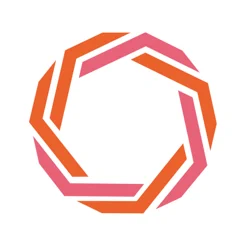Lesbian Visibility Is a Necessity, Not an Option
Culture
By myGwork,
From the Salem witch trials, to the infamous victims of Jack the Ripper, womxn that live outside social norms have been vilified and hunted for centuries. For queer womxn today, their identities are often overlooked or misunderstood. This week is Lesbian Visibility Week and its main aim is to celebrate lesbian womxn and bring awareness to an array of topics that surround the lesbian identity, yet some would argue this is no longer needed. However, it doesn’t take much digging to see that when it comes to lesbian liberation, we still have some work to do.
Looking back to what you were taught in history class, it is very likely that you won’t remember lessons about any famous lesbians. The leaders, writers, poets and warriors that graced your textbooks rarely seemed to sway outside the heteronormative grain. Nevertheless, that does not mean they did not exist. Queer womxn have existed from the dawn of time, yet their invisibility throughout history is jarring.

Sappho of Lesbos Island
The Ancient Greeks were known for their sexual freedom, and the womxn were no different. The most of famous of which may be Sappho, born in the 6th Century BCE, her lyrical poetry earned her the title of one of the greatest writers of her time. She lived on a Greek island and her work included many tales of sexual desire and love between womxn. Her legacy lives on today with the word Lesbian originating from her hometown name, Lesbos. Since then, lesbian womxn have been pioneers and changemakers. From Christina, the 17th Century Queen of Sweden, to Florence Nightingale, whom we owe for the creation of modern nursing, history is abundant with smart and powerful queer womxn. Modern history is no different with powerful lesbian figures such Audre Lorde, the self-described “black, lesbian, mother, warrior, poet,” who played a vital role in pushing forward equality and whose work continues to influence modern-day life.

Audre Lorde, Florida 1983
Yet despite this, queer womxn take up very little space in history books and when they do, their sexuality is rarely mentioned. In comparison to gay men, love between womxn is mentioned a fraction of the time. This is in part due to the fact that history books have (up until very recently) been written mostly by men, therefore the leading characters are almost always men. Majority of past civilisations have also been patriarchal, meaning, womxn held little power and were often reduced to societal roles that served men. This lack of power meant that living a life outside of the norm became even harder. This is one example of how misogyny and queerphobic attitudes work together to oppress queer womxn. For those that are even more marginalised, such as disabled womxn, trans womxn and womxn of colour, the intersection of their identities means that existing as their true selves can become near impossible.

Christopher Street Liberation Day march, 1971
Dr Ritu, an LGBT activist, explains this further “Gender equality is still a utopian goal, and women are often overlooked, and marginalised, in the workplace, on the street, and in history.
“Our skills, qualities, and achievements often go unrecognised or uncharted, and this inequality is compounded for women of colour, women with disabilities, and women that don’t conform to heterosexual norms.”
History may be one thing, but what about today? It’s estimated that 7% of the population identify outside of heterosexuality, with a population of 32 million womxn in the UK, that has to be a lot of womxn loving womxn. However, the awareness of the existence of lesbians and their relationships by the public remains at times, meagre. Ask any queer womxn how often their partner has been mistaken for their “best friend”, “gal pal” or even sister (no matter how different they may look) and it’s likely to be more times than they can count. In the media, lesbians continue to be misrepresented and underrepresented, leading to reductive stereotypes being widely believed as fact and many lesbians being left to feel invisible. This misunderstanding of their relationships results in a common and harmful presumption that unless you fit into an inaccurate stereotype of what a queer womxn looks like, you are straight until proven otherwise. This means that for many, you have to come out again and again, each time you meet someone new, judging the situation and whether it is safe to do so. As you can imagine, no matter how proud you are of your identity, this can be exhausting.
Not only is this exhausting, but dangerous. Recent research has shown that a third of lesbian mums have faced homophobia, with much of this shockingly coming from schools and fellow parents. One womxn shares that her child was “attacked at school and bullied on a regular basis for having two mums,” and for another family their child “stopped wanting to go to school,” they explained they “felt anger it was not dealt with by the school, and also guilty for feeling like we were the root of the kids’ upset.” We often hear that we are hopeful that the next generation will be kinder, more empathetic and accepting, but if this is the environment they are being schooled in, how is that possible?
Much of this comes back to how we’re educated around LGBTQ+ topics and with Section 28 removing all LGBTQ+ education until 2003, the nation has been left clueless on LGBTQ+ identities. From this, a label that has suffered from a lack of understanding is the term ‘lesbian’, with many stigma’s and stereotypes becoming a matter of fact for many. With such little understanding of LGBTQ+ identities, it is no wonder so many queer womxn find it so hard to identify with the term lesbian.
This misconception around lesbian identities involves the idea that there are two versions of a lesbian, a masculine butch woman who is “trying to replace men” and the feminine counter-part who is confused and needs a man help her see sense. These ideologies have presented themselves in WLW (womxn loving womxn) relationships and mean that society becomes extremely confused when queer womxn exist outside of this.
A major influencer to these outdated ideas is the porn industry. With 40 billion views per year, “lesbian” has been reported the most searched term in porn. With the lack of representation of lesbians outside of this industry, for some this may be the only time they see queer womxn. As obvious as it may seem, many fail to realise that this content is created for the male gaze and isn’t an accurate representation of WLW relationships, from the womxn involved to what happens, none of it is real. This then feeds into the lack of realisation that female sexuality can (and does) exist outside of the male gaze.
There comes a point where we ask ourselves, why have lesbians been sexualised so much? In films, music, and everyday life, lesbians are facing prejudices at every corner where it becomes exhausting. To some, this is enough to avoid using the term lesbian as it holds the weight of millions of eyes and views.
Despite all this, many minimise the problems queer womxn face. Pink News reported that attitudes towards lesbians are more positive than gay men, but the sexualisation of lesbians isn’t acceptance. With it being Lesbian Visibility Week, twitter is full of amazing content from lesbians across the world, but as always, we find those who can’t simply hide their ignorance.

Whilst records of lesbians have been around since 6th-century BCE, their existence isn’t one that is respected or accepted by all. It’s important to acknowledge that whilst the LGBTQ+ movement creates beautiful changes for LGBTQ+ rights, we need to include lesbians and protect them from the hyper-sexualised perceptions created by society.
A survey completed by DIVA magazine, showed that 1 in 3 LGBTQ+ women have been physically abused due to their sexuality, plus 1 in 2 don’t feel safe on public transport. This survey comes months after two lesbians were attacked by a group of boys demanding the women “to show how lesbians have sex”. These harrowing statistics show we have a lot more work to do before lesbians are truly accepted.
In a paradoxical turn of events, just as lesbians have had their identities policed and controlled from their oppressors, there have been rare but loud cases of lesbians doing the same to others in the community. Although you can control your own identity and labels (and this is often empowering to do), you cannot police the identity and labels of anyone else, even those who share similar identities to yourself. The irony of this treatment does not minimise its harm, especially as it is aimed at the trans community, whose basic human rights are too often under attack.
To counteract this and show much needed solidarity to the trans community, the campaign #LwiththeT was started in 2018 and has since gone viral. This has seen thousands of lesbians outcry their love and compassion for the trans community, many of whom are lesbians themselves. It’s vital that when we’re talking about the need for visibility and liberation of queer womxn, trans and non-binary people are included. Non-binary people are also oppressed and marginalised by the patriarchy, so in the fight against misogyny, their voices are crucial. As Linda Riley, DIVA Magazine Publisher, said, “Lesbian Strength is inclusivity, not separatism.”

L With The T campaigners lead the Pride in London parade, 2019
Whilst much of this may seem doom and gloom, this is simply the reality for many lesbians, and acknowledging this is happening creates a stronger foundation to make a change going forwards. Despite all of this, change is happening and events such as Lesbian Visibility Week push this forward. At the end of the day, lesbian visibility is a necessity, not an option, and when this week passes lesbian identities do not disappear, so let’s make sure the push for their equality and acceptance does not either.

